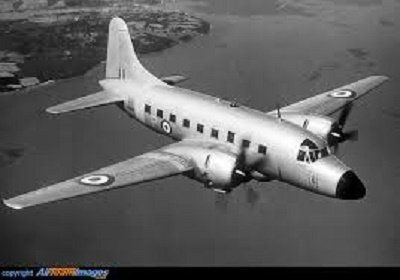Lying just offshore, south of Thorney Island off Pilsea Sands there is a large rock with it’s smaller companion next but these are only visible at low tides.
It is believed they were carried here from another area by melting glaciers during the Ice Age. Their shape and size have been diminished over the centuries. They appear black and are believed to be Sarcen Stones that once covered much of southern England – a dense, hard rock created from sand bound by a silica cement, making it a kind of silicified sandstone. The picture is of a Stone Henge sarcen - the one off Pilsey is buried or uncovered with the movement of the tides, so I've not seen it.
Was the 'Thorney Anomaly' one on the way to Stonehenge ?
The only access onto Thorney Island was by boat, unless the causeway was taken at low tide. For the island children, the journey to school in Emsworth was across this causeway on foot, which would flood as the tide came in, requiring children to wade across if they were late in the tide. There is a story that one unfortunate child was the victim of a mis-timed crossing. Going to school was a hazardous undertaking for children on Thorney Island, but provided an excuse if you were late - 'the tide was in'.
Whether as a consequence, efforts were made to join the Island to the mainland by building revetments across from Thornham to North of Stanmore Pt and from Emsworth Ponds to Wickor Pt. Compare the 1820 map of the Island with the one below in the 1930s. An extract of an Auction Notice of 1882 shows the reclaimed land as Lot 1.
These revetments would hold back the tide, except where The Deeps crossed. On the east side, sluice gates were installed. The land was allowed to drain with The Deeps retained as they were too deep to drain. The land recovered is very marshy, with fine stands of bullrush for its own special habitat. A visit down the coast path at a spring tide will show the height of water held back from this low lying area and the special habitat created.
Sluice gates at the East end of the Deeps were set to allow a water flow through for freshness. A failure of some of the sluices in Autumn 2023 led to the causeway flooding and restricted access for a busy Island community. Thorney Island was an Island again, access by a wade-way, though only 18inches deep this time – so some improvement over the 150years.
A less successful attempt to reclaim Thorney Marshes, grazed in the middle ages, was made in 1880 by making a gravel revetment from Pilsey Island to Cobnor Point on the Chidham peninsular. Though this was achieved and the land put up for auction, there was a breach within six months and the sea flooded back in. No further attempts to reclaim Thorney Marshes has been made since. See the button for the full Auction Notice and the extent of this ambitious reclamation.
Today, sailors in the Thorney and Chichester Channels pass the remains of these efforts seen as the remnants of a shingle bank, clearly shown on the harbour chart and visible at low spring tides. To add to the floating rafts in the Deeps, a large mound of shingle was deposited on this old revetment in 2022 to add another nesting habitat for Terns - the harbour's vulnerable nesters.
From the Cobnor Point end, you can get a good view of what was intended as it is closer to the shore. Next time you walk down past the boatyards on the coast path from Thornham, look to the west for an idea of how deep the water was before the sea walls were put in. Timing your walk with a high spring tide will see how the revetments keep the marshlands and Deeps as a unique habitat and how man’s ingenuity has adapted the landscape in spite of sea level rise.
Clyde Jay (Jnr) grew up in Denver and was working in Fairplay Colorado when, with his friend Hoke Mahn, they travelled in 1940 to Vancouver to join the Royal Canadian Airforce. Training in a range of bases, they both won their wings and shipped across the Atlantic from Halifax, to fly torpedo bombers to defend the British shores.
An archive has been created from his letters that tell the story of his adventure, the trials of flying heavy aircraft, ameliorated by the friends and comrades that shared the hardship and celebrated the joys of flying. We are grateful to Kim Arserio for making this document available to tell of his and his comrades story.
Sadly, Clyde and his crew were lost, crashing at Hambledon on 23rd March 1942 during a training flight in their Hamden bomber. He now lies in our Commonwealth War Cemetery at St Nicholas. The commendations he received are a moving tribute from the folk who knew him.
His friend Hoke Mahn continued flying torpedo bombers, but came down in the North Sea 4th June 1942 surviving in his life raft for 14 days before pick-up. His crew was lost. Two weeks in the North Sea is an epic survival story at any time of year, but it took its toll. Hoke went to marry a nurse, have a daughter and study Engineering at Cambridge, only succumbing in 1946 to an infection that took him in his weakened state. His ashes are buried with his pal, Clyde.
Two brave men who crossed a continent and ocean to serve; to repel an evil whose dread was not fully known when they volunteered. Yet young men like these bequeathed a peace we now enjoy, a freedom we owe to them.
During the cold war, a period of rivalry between the United States and the Soviet Union started in 1947, went on to last for decades and is reemerging now in the 2020s. The Ministry of Defense were obviously concerned about the security at some of their military establishments, Thorney Island being one of them. A group of people were selected to test security at some of the bases and Ted and a colleague were given Thorney Island as one of their objectives.
Ted was a frogman and bomb disposal diver in the Royal Navy. His experience brought him work as an underwater stunt man. His highlight was as advisor during the filming of “Above us the Waves” -a 1955 film about the attack on “The Tirpitz” in a Norwegian Fjord during WWII. His other highlight was being brought up in Prinsted. So Ted had local knowledge of the area, having larked about in the vicinity while growing up.
On this foray, Ted and his colleague drove down Thornham Lane and after parking up, they made their way towards the Deeps, which are the remnant of the old tideway that used to separate Thorney Island from the mainland. Wearing their frogman suits and carrying their masks and flippers, they used the dense blackberry bushes as cover, they made their way across the field to Deeps. Donning their flippers and masks, Ted slid into the deeps and swam towards the Thorney Bank. Ted and his colleague waited in the deeps until they thought it was clear and then made their way to the capture target. Despite the R.A.F. posting guards 300yds apart around the Island Ted had 'taken' the Island!
Prinsted 1 -::- RAF nil - a triumph for local knowledge.
However, one should not underestimate the danger of this escapade, or any other foray around the marshes and muds that surround Thorney Island. The Deeps hold dangers that the ducks float over, so however enticing, please don't repeat Ted's swim.
Contributed by David Holman
Some of the older residents of Southbourne and Prinsted will remember the red light on the top of St John's Church spire. The heavy weight aircraft would fly over Southbourne on their final approach to Thorney Island's runways.
Late one evening in May 1962, the roar of a heavy aircraft was interrupted by a loud explosion. Investigating, 4 young men took two boats from Prinsted beach to investigate the debris and bring 3 survivors to shore. Their story of the rescue and its aftermath tells much of the time and attitudes of the operational issues of the Thorney Island Air Station and these heavyweight aircraft. Flying had its dangers and its heroes, as also did the youth of Prinsted in their gallant rescue.
Read the details below in David Holman's account as a book or document archive.

























